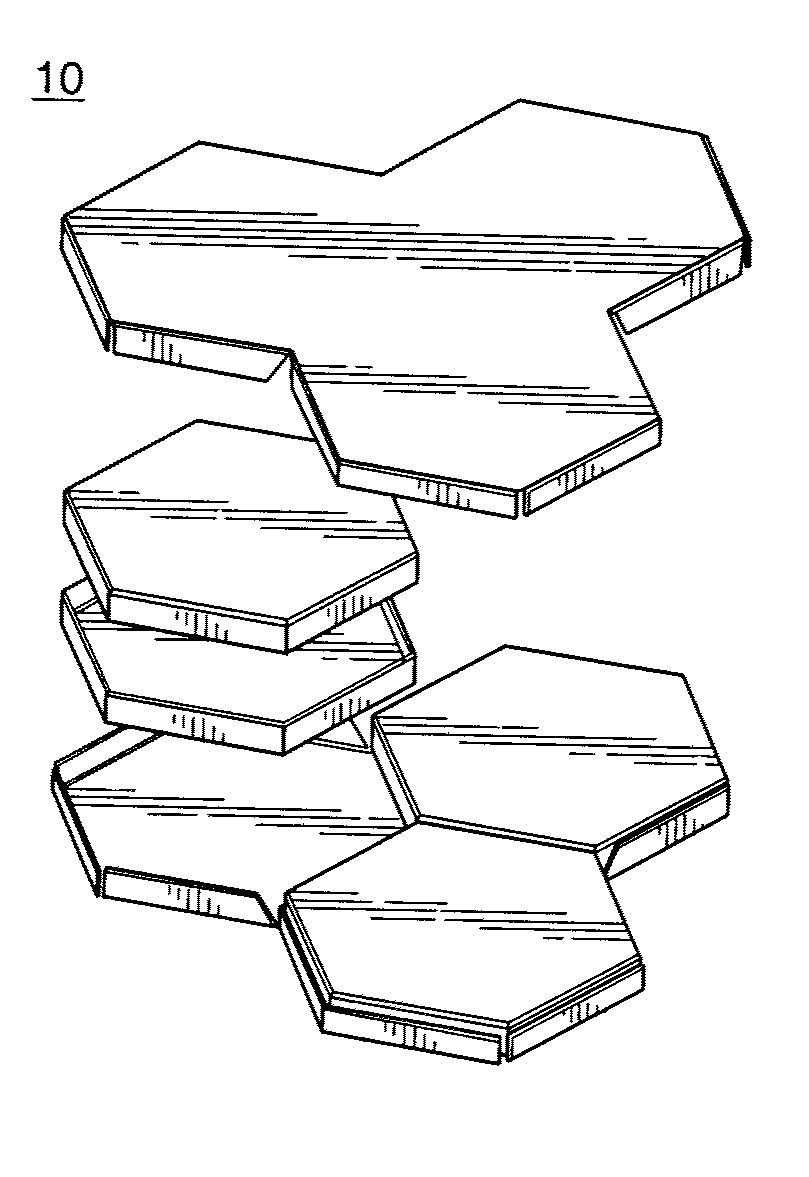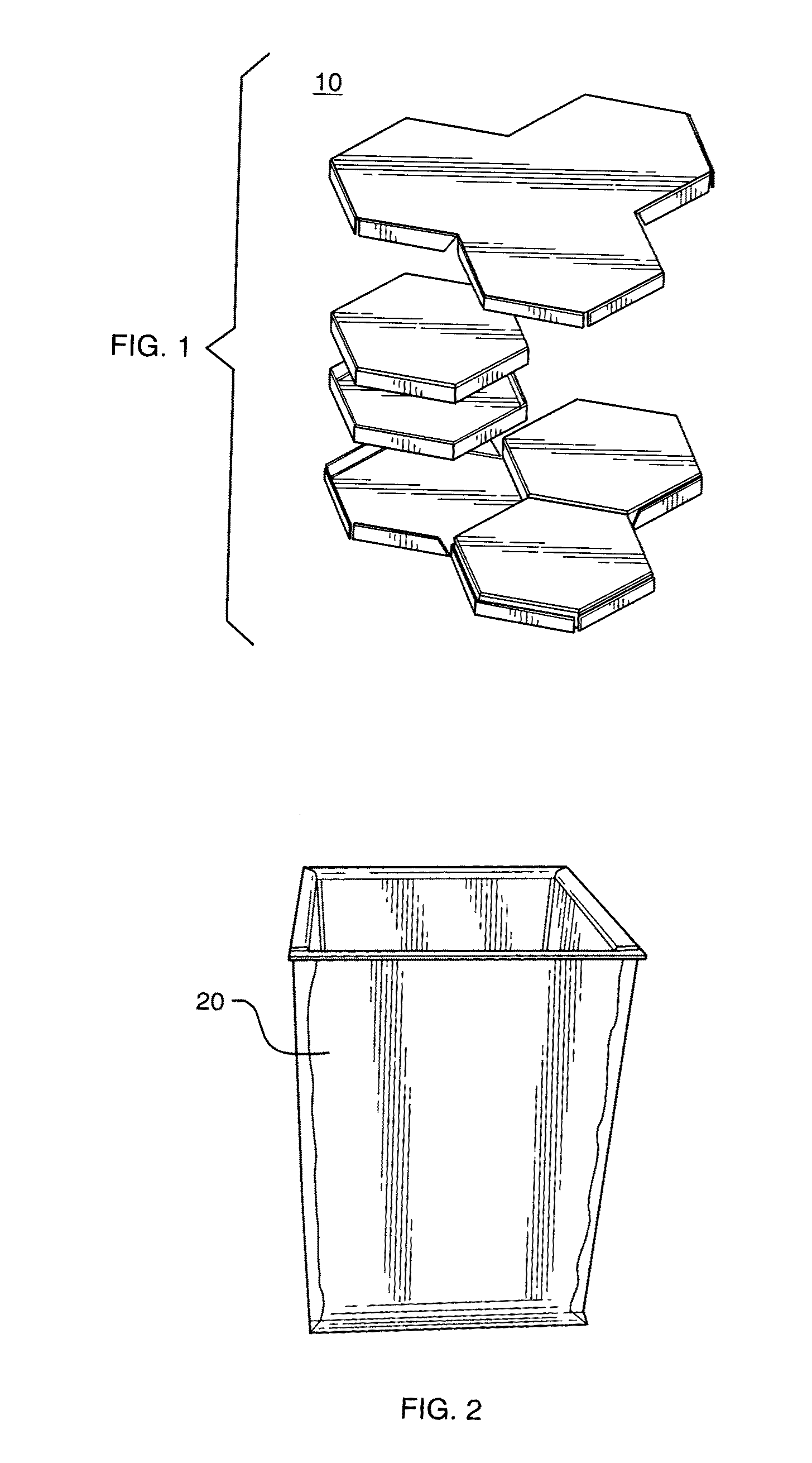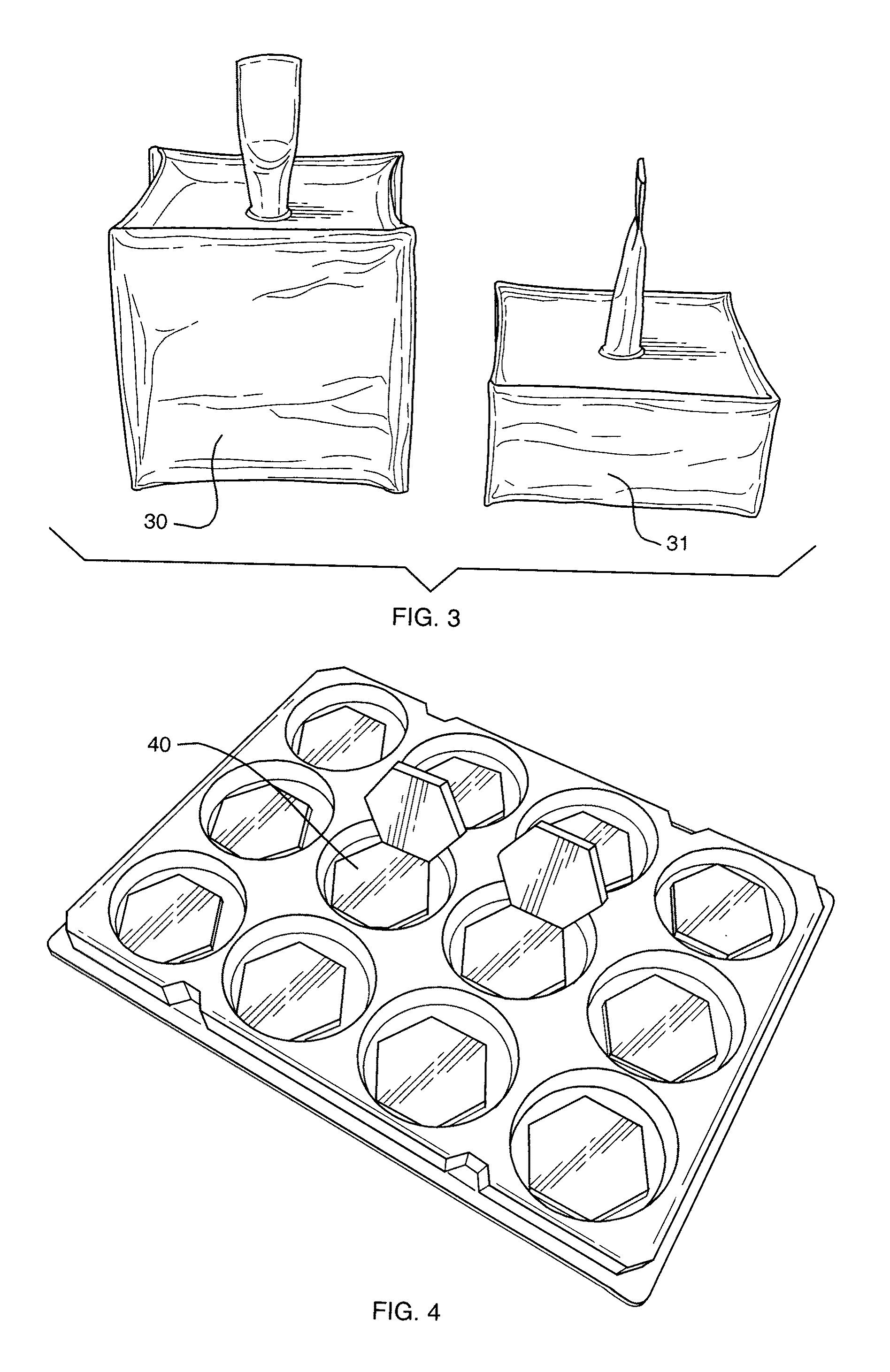Method for producing armor through metallic encapsulation of a ceramic core
- Summary
- Abstract
- Description
- Claims
- Application Information
AI Technical Summary
Benefits of technology
Problems solved by technology
Method used
Image
Examples
Embodiment Construction
[0032]The present invention is a method for metallic encapsulation of ceramic tiles to produce armor. The embodiment of the method begins with selecting a ceramic tile of the desired geometry, which may include, for example, a flat plate or a torso plate.
[0033]The method then comprises the fabrication of a conformal sheet metal container, wherein suitable sheet or plate stock ranging from 0.005″ (0.0127 cm) to 0.250″ (0.635 cm) in thickness is made in the shape of the ceramic tile to be encapsulated. The sheet metal envelope can be formed by methods such as brake-forming, shearing, hydroforming, deep drawing, stamping or superplastic forming. The conformal sheet metal container is made with dimensions that are modestly oversized relative to the ceramic tile [+0.005″-0.010″ (0.0127-0.0254 cm)] so that the container fits comfortably around the tile, facilitating easy assembly. An example of a sheet metal container design 10 that allows for double encapsulation of individual hexagonall...
PUM
| Property | Measurement | Unit |
|---|---|---|
| Temperature | aaaaa | aaaaa |
| Temperature | aaaaa | aaaaa |
| Pressure | aaaaa | aaaaa |
Abstract
Description
Claims
Application Information
 Login to View More
Login to View More - R&D
- Intellectual Property
- Life Sciences
- Materials
- Tech Scout
- Unparalleled Data Quality
- Higher Quality Content
- 60% Fewer Hallucinations
Browse by: Latest US Patents, China's latest patents, Technical Efficacy Thesaurus, Application Domain, Technology Topic, Popular Technical Reports.
© 2025 PatSnap. All rights reserved.Legal|Privacy policy|Modern Slavery Act Transparency Statement|Sitemap|About US| Contact US: help@patsnap.com



